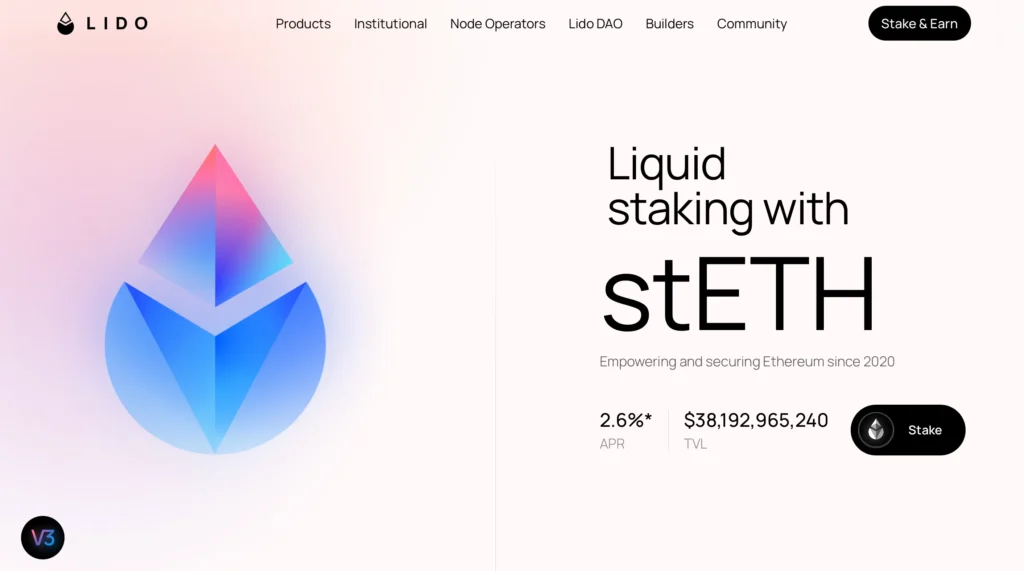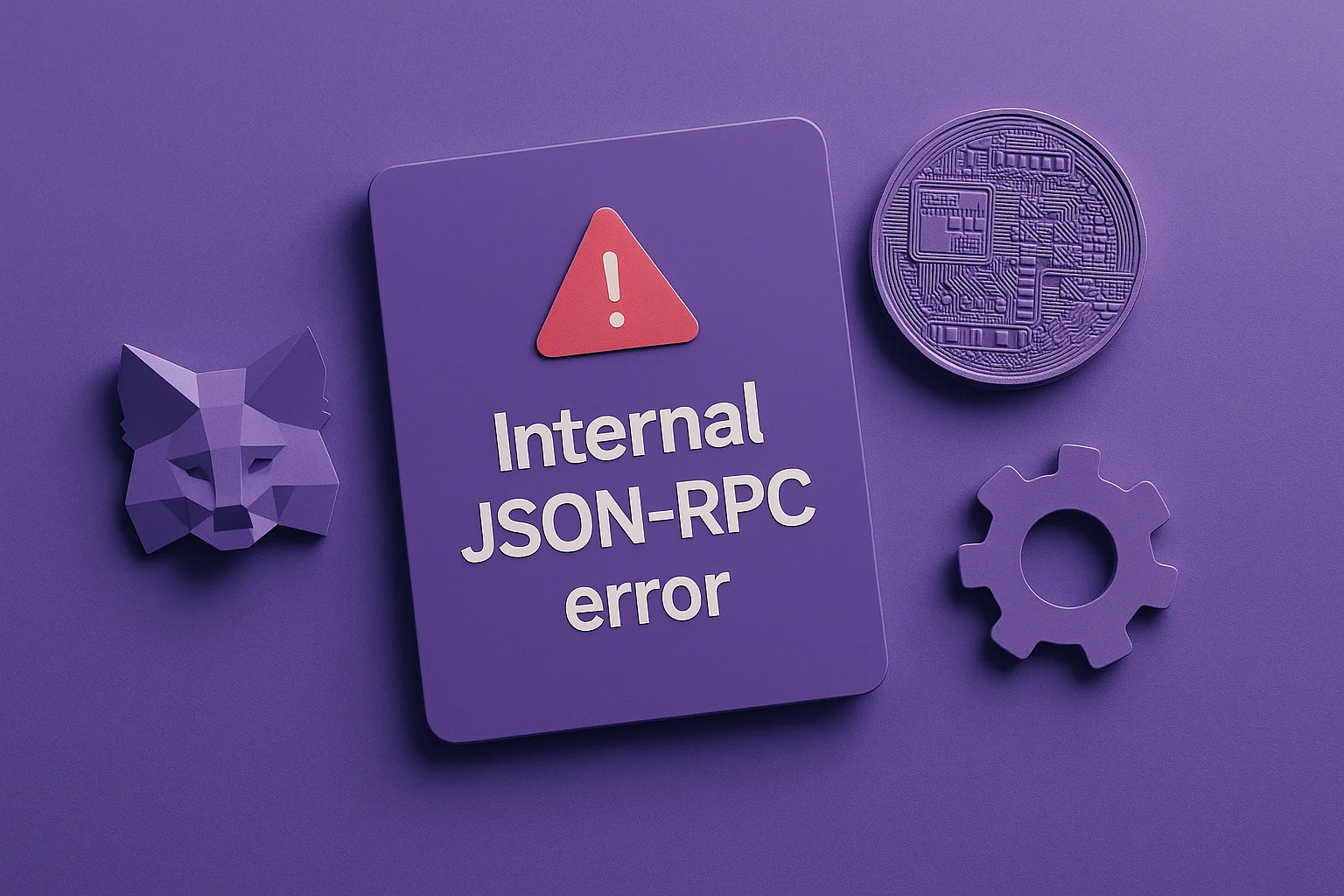Liquid Staking Guide: What It Is, Legal Status, and Top Providers
Staking often locks up your crypto, leaving you without access when markets shift or new opportunities appear. This lack of flexibility can limit growth, expose you to risks, and create uncertainty around compliance and taxation. Liquid staking changes this by removing those barriers. In this guide, you’ll learn about what it is, its advantages, risks, […]

Staking often locks up your crypto, leaving you without access when markets shift or new opportunities appear. This lack of flexibility can limit growth, expose you to risks, and create uncertainty around compliance and taxation.
Liquid staking changes this by removing those barriers. In this guide, you’ll learn about what it is, its advantages, risks, regulatory perspectives, and leading providers shaping the space in 2025.
Let’s roll!
What is Liquid Staking?
Liquid staking is a process that allows crypto holders to participate in proof-of-stake blockchains while maintaining access to their staked assets.
In traditional staking, once you lock your tokens into a validator, they are unavailable until the network’s unbonding period ends. That means your capital is tied up, which limits your flexibility.
With liquid staking, the rules change. Instead of losing access to your staked tokens, you receive a staking receipt token (sometimes called a liquid staking token, or LST). This digital asset serves as proof of your stake and can typically be traded, transferred, or utilized across DeFi protocols.
In simple terms, liquid staking enables users to continue earning staking rewards while maintaining liquidity (the ability to utilize those assets elsewhere in the DeFi ecosystem).
This innovation has quickly gained traction because it solves one of the most significant drawbacks of traditional staking services: illiquidity. By holding a receipt token, crypto investors can take part in liquid staking activities while keeping their funds active in other opportunities, such as lending or providing liquidity.
How Does Liquid Staking Work?
At the core of every liquid staking protocol are smart contracts. When you deposit your tokens into a supported validator through a liquid staking provider, the system automatically generates a staking receipt token that represents your original deposit plus any potential staking rewards.
Here’s the flow in simple steps:
- Deposit tokens – You stake crypto (for example, staked ETH on Ethereum) with a liquid staking provider.
- Receive receipt tokens – In return, you get a specific staking receipt token that mirrors the value of your deposit.
- Use your new token – You can hold it, trade it, or deploy it in multiple DeFi protocols to earn yield. This flexibility allows you to generate additional rewards without losing the original staking income.
- Redeem tokens later – When you’re ready, you can begin redeeming staking receipt tokens to get your original assets back, along with the accumulated rewards.
Because the process is powered by self-executing computer code (smart contracts), everything happens transparently and programmatically. Token holders don’t need to trust a centralized third party, since the blockchain itself validates transactions and manages the stake.
Traditional Staking vs. Liquid Staking: Main Differences
| Traditional Staking | Liquid Staking |
|---|---|
| Tokens are locked and unavailable until the unbonding period ends. | You receive a staking receipt token (or liquid staking token) that can be traded, used in DeFi, or held. |
| No liquidity. Assets are inaccessible during the staking period. | Liquid staking allows users to maintain liquidity while utilizing their staked value across DeFi protocols. |
| Earn staking rewards only from the validator. | Earn rewards from staking plus additional rewards by using receipt tokens in multiple DeFi protocols. |
| Often requires large amounts of crypto or running a validator node. | Supports pooled staking, lowering the barrier for smaller token holders. |
| Locked tokens limit investment choices. | Receipt tokens enable providing liquidity, lending, or other cryptocurrency applications while still earning rewards. |
| Subject to validator penalties such as slashing coverage and long unbonding periods. | Still subject to validator risks, but the diversified use of staked assets may mitigate some of the impact. |
| Best for long-term holders who do not need liquidity. | Suitable for investors who want to stake, generate additional returns, and stay active in the DeFi ecosystem. |
Benefits and Risks of Liquid Staking
| Benefits of Liquid Staking | Risks of Liquid Staking |
| Liquidity: Unlike traditional staking, liquid staking allows users to keep their assets active by using staking receipt tokens or liquid staking tokens (LSTs). | Smart contract risk: Bugs or exploits in the liquid staking protocol can result in the permanent loss of funds. |
| Dual yield: Token holders continue to earn rewards from validators while also using LSTs across multiple DeFi protocols for additional rewards. | Regulatory uncertainty: Authorities may classify liquid staking activities as an investment contract under the Securities Act or Securities Exchange Act, depending on the circumstances surrounding the offering. |
| Flexibility: Users can redeem staking receipt tokens at a later stage while still deploying them for lending, trading, or providing liquidity in the DeFi ecosystem. | Centralization concerns: Large liquid staking providers may concentrate control over validators, creating systemic risks for proof-of-stake networks. |
| Accessibility: Pooled staking lowers the entry barrier for smaller token holders, making it easier to participate in securing networks without running a validator node. | Slashing coverage limitations: Even with protections, users remain exposed to penalties if validators misbehave or fail to validate transactions. |
| Capital efficiency: Assets are not tied to a single location. Users can diversify and explore crypto applications while still having exposure to the underlying asset. | Liquidity mismatch: Secondary markets for receipt tokens may not always maintain parity with the value of the staked tokens, especially during stress events. |
| Economic benefits realized: Investors can generate additional returns and optimize strategies by combining staking with DeFi opportunities. | Redemption delays: Depending on the chain, redeeming staking receipt tokens may still require waiting for unbonding or protocol-specific exit queues. |
| Innovation in DeFi protocols: LSTs integrate into lending, borrowing, and derivatives, expanding the scope of the DeFi ecosystem. | Complexity for users: Understanding how staking receipt tokens, covered crypto assets, and redemption mechanics work requires careful education to make informed decisions. |
| Portfolio diversification: Exposure to both staking rewards and financial instruments within DeFi improves strategy flexibility. | Counterparty risk: Some providers add ancillary services, custody arrangements, or guarantees that may reintroduce reliance on managerial efforts of third parties. |
Legal Status and Regulatory Perspectives Regarding Liquid Staking Activities (as of October 2025)
The regulatory treatment of liquid staking activities remains complex. Authorities focus on whether staking receipt tokens, liquid staking tokens (LSTs), and related services fall under securities or financial regulation. The outcome usually depends on how closely a model ties to user reliance on a provider’s managerial efforts rather than purely protocol-level staking.
Look how it is in some of the most important countries:
United States
The U.S. Securities and Exchange Commission (SEC) continues to apply the Securities Act, the Securities Exchange Act, and the Howey Test. The SEC’s Protocol Staking Statement (2025) clarified that purely on-chain staking, where token holders delegate tokens and earn rewards through the blockchain’s consensus mechanism, does not involve an offer of securities. These arrangements are handled by self-executing computer code without reliance on outside actors.
A follow-up Liquid Staking Statement in August 2025 extended this analysis. The division’s view, published by Corporation Finance, is that if a staking receipt token holder receives a token that only evidences ownership of the underlying asset and automatically passes through rewards programmatically, the activity may not be an investment contract. This statement refers to arrangements that lack promises to provide entrepreneurial benefits or reliance on such efforts of a third party.
However, the SEC cautioned that adding providing ancillary services, variable fees, or marketing that highlights economic benefits realized from provider expertise could shift the outcome. In such cases, regulators may treat the design as a security, especially when features are explicitly enumerated as additional profit rights beyond basic staking.
Earlier enforcement actions against centralized programs, such as Kraken’s (2023), demonstrate the risk associated with pooled assets and marketed yields that rely on a company’s managerial efforts. While the rescission of SAB 121 and the dismissal of the Coinbase staking case suggest a more lenient stance, U.S. providers must still carefully assess the specific circumstances surrounding each liquid staking activity.
European Union
The EU applies the Markets in Crypto-Assets Regulation (MiCA). Under MiCA, liquid staking providers that custody staked tokens or issue receipt tokens are considered crypto asset service providers (CASPs). They must obtain authorization and meet governance, safeguarding, and disclosure standards. The EU does not rely on Howey but emphasizes investor protection through licensing and operational rules.
United Kingdom
From January 2025, the UK confirmed that crypto staking is not a collective investment scheme (CIS), reducing one significant legal uncertainty.
However, the upcoming regulatory framework brings staking within the broader perimeter of crypto services. Firms that provide pooled staking or facilitate liquid staking services for clients will need to obtain authorization from the Financial Conduct Authority (FCA), with a focus on transparency and asset ownership.
Singapore
The Monetary Authority of Singapore (MAS) has taken a restrictive approach to retail markets. Licensed providers must segregate staked assets, and as a result, many cannot offer staking services to retail users. Institutional and accredited investors remain eligible; however, parties involved in retail-facing liquid staking activities must prepare for strict oversight.
Canada
Canada’s securities regulators (CSA) require platforms offering crypto staking to register as securities dealers and comply with custody safeguards.
Australia
In Australia, the regulator (ASIC) is updating guidance to confirm when staking services, including liquid staking derivatives, qualify as regulated financial instruments, which would trigger licensing obligations.
3 Examples of Top Liquid Staking Platform Providers This Year
Lido Finance

Lido Finance is the leading liquid staking protocol on Ethereum, issuing staked ETH (stETH) as a specific staking receipt token. Its dominance comes from deep integration across DeFi protocols, making it one of the most composable and liquid assets in the ecosystem.
Lido enables users to maintain liquidity while securing Ethereum, with stETH being widely accepted for lending, trading, and collateral purposes.
However, its scale also raises concerns about centralization, as a handful of node operators control a large share of Ethereum’s staked assets, making governance and decentralization recurring points of debate.
| Pros | Cons |
|---|---|
| Market leader with the largest share of staked ETH | Centralization risks from limited node operators |
| High liquidity and widespread acceptance | DAO governance complexity |
| Deep DeFi ecosystem integration | Regulatory spotlight due to size |
| Simple user experience | Slashing penalties possible despite pooled design |
Jito

Jito is a top liquid staking provider on Solana, offering a receipt token called JitoSOL.
It stands out because it distributes staking rewards along with MEV (maximal extractable value) captured from validators, effectively providing additional rewards to receipt token holders. This makes Jito particularly attractive for those seeking to maximize yield without sacrificing access to the underlying asset.
Its tight integration into Solana’s DeFi ecosystem ensures strong utility, but Solana’s network-specific risks and Jito’s reliance on validator coordination are factors investors must weigh.
| Pros | Cons |
|---|---|
| Combines staking rewards with MEV yield for higher returns | Dependent on the Solana network stability |
| JitoSOL is accepted across Solana DeFi protocols | Higher complexity in MEV distribution mechanisms |
| Strong yield optimization | Concentration risk among validators |
| User-friendly staking flow | Limited to the Solana ecosystem |
Ether.fi

Ether.fi is an emerging liquid staking protocol focused on Ethereum but distinct in its emphasis on restaking and advanced liquid staking activities.
It issues eETH, a staking receipt token holder instrument that integrates with EigenLayer, allowing users to restake ETH for enhanced network security and generate additional returns. This design aligns with growing demand for composability, as eETH can be used across multiple DeFi protocols while still tied to the underlying asset.
While Ether.fi is gaining traction, its model introduces new risks around activities undertaken in restaking, making security audits and governance transparency critical.
| Pros | Cons |
|---|---|
| Supports EigenLayer restaking for additional tokens and rewards | Higher technical and smart contract risk |
| Expanding DeFi ecosystem integrations | Less liquidity than Lido at present |
| Strong appeal to advanced Ethereum users | The complexity of restaking may deter beginners |
| Transparent governance model | Still maturing compared to Lido’s dominance |
How Do I Start with Liquid Staking?
Most platforms that allow liquid staking generally work the same way, so these steps will guide you through the process across almost all liquid staking providers:
- Connect your wallet – Open the platform of your chosen liquid staking protocol and connect your wallet. Ensure it supports the crypto assets you want to stake and that you have complete control over your keys.
- Select the network and validator – Choose the blockchain you want to stake on, such as Ethereum for staked ETH. Some platforms automatically assign a node operator, while others allow you to select one.
- Choose the assets to stake – Pick the staked tokens you want to deposit.
- Review fees and conditions – Check validator commissions, provider fees, and any extra terms.
- Stake and confirm – Approve the transaction in your wallet.
- Use your tokens – You can hold them, trade them, or deploy them into multiple DeFi protocols to earn rewards or generate additional returns, depending on the options available.
- Redeem when ready – Start redeeming staking receipt tokens to get your original staked assets plus rewards. Redemption times vary, and liquidity may depend on market demand for receipt token holders.
FAQ
Yes. It lets you earn staking rewards on staked tokens while using liquid staking tokens (LSTs) in DeFi protocols to gain additional rewards. Profitability depends on validator performance, fees, and demand for LSTs.
Generally yes. Holding idle assets brings no return, while staking allows you to receive rewards through the consensus mechanism. Liquid staking will enable users to maintain liquidity and utilize receipt tokens across multiple DeFi protocols.
They carry risks. Smart contracts can fail, node operators may be penalized, and some providers introduce additional risk by offering ancillary services. Safety varies by liquid staking protocol.
Yes. In most jurisdictions, the rewards or additional tokens from protocol staking activities are taxed as income when you receive rewards.
Typically, liquid staking activities generate taxable income when rewards are credited to the account. Later sales or redeeming staking receipt tokens may trigger capital gains tax on the underlying asset.
Yes. Risks include slashing coverage if validators fail to validate transactions, smart contract exploits, or liquidity mismatches affecting receipt token holders.
Final Word
Hopefully, you now understand what liquid staking is, how it works, and why it is becoming one of the most significant trends in the DeFi ecosystem. We covered the differences from traditional staking, the benefits and risks, and how liquid staking enables users to stay flexible while still earning.
You also saw how regulators across major countries are approaching liquid staking activities, and why compliance matters for receipt token holders.



